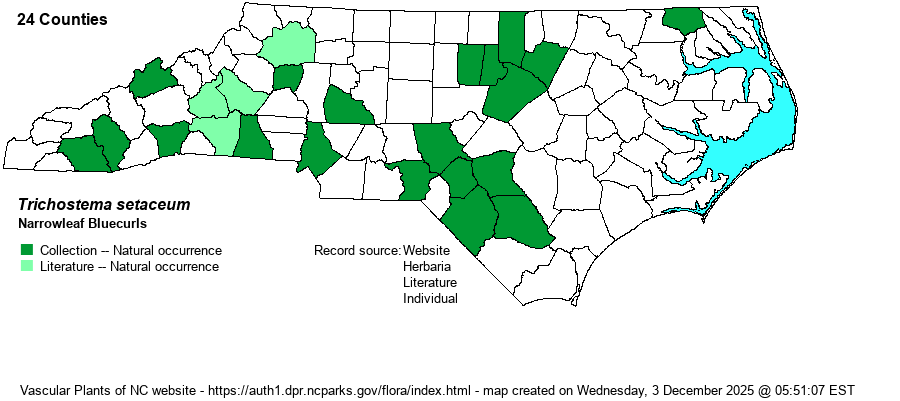| Author | Houttuyn | |
| Distribution | Scattered over much of the Piedmont, the southwestern Coastal Plain, and the Mountains. Also a record for the northern Coastal Plain (Gates). Most widespread in the Rolesville Pluton region, which underlies northeastern Wake and western Franklin counties.
This is a fairly widespread but sparsely populated species of the Southeast, from CT and southern IL south to central FL and eastern TX.
| |
| Abundance | Rare to uncommon in the Wake and Franklin counties area, but generally rare elsewhere in the Piedmont, southwestern Coastal Plain, and the central and southern Mountains. Very rare in the northern Coastal Plain. Seems to have declined considerably in recent decades. It is a state Significantly Rare species. Though there are specimens for nearly 20 counties and sight reports for a few others, a number of these records are now historical, and the S2 State Rank seems appropriate. | |
| Habitat | This is a species not only of dry places, but sandy places in thin soil, mainly around the margins of granitic flatrocks and other similar outcrops. It also can be found in sandy clearings in parts of the Coastal Plain. | |
| Phenology | Blooms from August to frost, and fruits shortly after flowering. | |
| Identification | This species is a fairly small herb, growing to about 1 foot tall, with a few branches in the upper part of the plant. In this species, the opposite leaves are quite narrow, much more so than in the common T. dichotomum. It has linear leaves, about 1.5 inches long but only about 1/8-inch wide, with entire margins and tapered basal portions to appear almost sessile. The flowers are essentially identical to those of S. dichotomum, being violet-blue with white on the long lower lip, which is spotted with purple. Unfortunately, this species is very hard to find, and you likely will need to poke around the margins of a granitic flatrock in later summer or early fall to see it. | |
| Taxonomic Comments | A few references, mainly old ones, include this with T. dichotomum.
| |
| Other Common Name(s) | None | |
| State Rank | S2 | |
| Global Rank | G5 | |
| State Status | SR-T | |
| US Status | | |
| USACE-agcp | | |
| USACE-emp | | |

